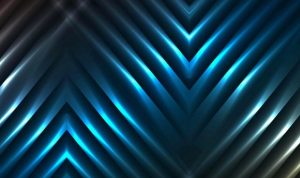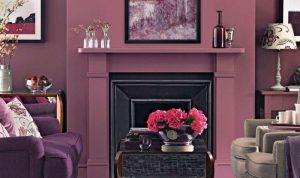Types of Wall Decor

Wall decor for the home – Transforming your home into a reflection of your personal style begins with thoughtfully chosen wall decor. The right pieces can elevate a room’s aesthetic, creating a focal point or subtly enhancing the overall ambiance. From minimalist modern designs to richly textured bohemian styles, the options are vast and varied. Understanding the different types of wall decor available, their aesthetic impact, and their suitability for various room settings is crucial for achieving your desired home design.
Categorizing Wall Decor by Material and Style
The selection of wall decor is significantly influenced by material and style. This table categorizes various options, offering a starting point for your home decor journey.
| Material | Style | Examples | Aesthetic Impact |
|---|---|---|---|
| Wood | Rustic | Reclaimed wood wall panels, framed wood prints, wooden shelves with decorative objects | Creates a warm, inviting, and natural feel; ideal for farmhouse, cabin, or traditional styles. |
| Metal | Modern | Metal wall sculptures, abstract metal art, geometric metal wall hangings | Adds a sleek, industrial, or contemporary touch; complements minimalist or modern interiors. |
| Fabric | Bohemian | Tapestries, macrame wall hangings, textile art, embroidered wall panels | Introduces texture, color, and a sense of global influence; suits bohemian, eclectic, or globally-inspired styles. |
| Glass | Modern/Minimalist | Mirrors, stained glass panels, glass sculptures, glass-framed artwork | Adds light and visual interest; enhances the sense of space, particularly in smaller rooms; complements minimalist and modern styles. |
| Stone | Rustic/Traditional | Stone wall accents, framed stone prints, stone mosaics | Provides a sense of permanence and natural beauty; ideal for creating a grounding and sophisticated feel; suits rustic, traditional, or Mediterranean styles. |
| Paper/Canvas | Various | Paintings, prints, posters, photographs, wall decals | Offers a wide range of artistic expression; easily adaptable to any style; allows for personal expression and storytelling. |
| Ceramic/Clay | Bohemian/Eclectic | Ceramic plates, decorative tiles, clay sculptures | Adds texture and color; can create a focal point or enhance a collection; suits bohemian, eclectic, or globally-inspired styles. |
Mood Board Examples: Wall Decor in Different Room Settings
Visualizing how different wall decor styles might appear in various rooms is crucial for informed decision-making. Below are descriptions of mood boards showcasing different styles in key areas of the home.
Mood Board 1: Living Room – Modern Minimalist
This mood board features a predominantly neutral color palette with clean lines. A large, abstract metal sculpture serves as a focal point against a light grey wall. A few carefully chosen black and white photographs are displayed in minimalist frames, maintaining a sense of balance and uncluttered space. The overall effect is sophisticated, calm, and airy, reflective of a modern minimalist aesthetic.
Mood Board 2: Bedroom – Bohemian Eclectic
This mood board embraces a warm and inviting atmosphere. A large tapestry featuring rich earth tones and intricate patterns hangs above the bed, serving as a visual anchor. Smaller macrame wall hangings are strategically placed, adding texture and visual interest. The color palette is diverse, incorporating warm browns, deep reds, and pops of vibrant color. The overall effect is cozy, layered, and expressive of a free-spirited bohemian style.
Mood Board 3: Kitchen – Rustic Farmhouse
Transforming your home with wall decor is a fantastic way to express your personality. Adding a statement piece can truly elevate the space, and for a touch of rustic charm and southwestern flair, consider a stunning longhorn skull, like those you can find at longhorn skull wall decor. This unique addition will instantly create a focal point, adding character and a conversation starter to your home’s decor.
This mood board evokes a sense of rustic charm and warmth. Reclaimed wood shelves display a collection of vintage ceramic plates and rustic metal containers. A framed print of wildflowers adds a touch of nature-inspired beauty. The color palette is largely neutral, with accents of warm browns and creams. The overall effect is inviting, homely, and representative of a rustic farmhouse aesthetic.
Mood Board 4: Bathroom – Spa-Inspired Minimalist
This mood board creates a serene and calming atmosphere. A large mirror with a simple frame reflects light, maximizing the sense of space. Subtle, textured wall tiles in muted tones create a spa-like ambiance. A single, minimalist framed print of a calming nature scene completes the look. The color palette is limited to calming blues, greens, and whites.
The overall effect is tranquil, sophisticated, and highly conducive to relaxation.
Choosing the Right Wall Decor
Selecting the perfect wall decor can transform a house into a home, reflecting your personal style and enhancing the overall ambiance. The key is to choose pieces that complement your existing furniture, color palettes, and the overall design scheme of your space. Careful consideration of size, placement, and the cohesive arrangement of multiple pieces will ensure a visually appealing and harmonious result.
Selecting Wall Decor to Complement Existing Furnishings
Successful wall decor integrates seamlessly with the existing interior design. Before purchasing any artwork or decorative items, analyze your current furniture and color scheme. For instance, a room with predominantly warm, earthy tones might benefit from artwork featuring similar hues or natural textures, such as a landscape painting with muted browns and greens, or a woven tapestry. Conversely, a room with a modern, minimalist aesthetic might be better suited to abstract art in cool, neutral colors or sleek metal wall sculptures.
Consider the style of your furniture: traditional furniture might pair well with classical paintings or ornate mirrors, while contemporary furniture might be complemented by geometric prints or modern photography. The goal is to create a sense of unity and balance, where the wall decor enhances, rather than clashes with, the existing elements.
Sizing and Placement Strategies for Wall Art and Decor, Wall decor for the home
The size and placement of wall decor significantly impact the overall visual impact. Overly large pieces in a small room can overwhelm the space, while small pieces in a large room can get lost. A general rule of thumb is to select artwork that is approximately two-thirds the width of the furniture piece it’s placed above. For example, a sofa that is 8 feet wide might be best complemented by a piece of art around 5-6 feet wide.
Placement also matters; artwork hung too high or too low can disrupt the visual flow. Ideally, the center of the artwork should be at eye level, approximately 57-60 inches from the floor. Consider the height of your ceilings and the scale of the room when making these decisions. A large, bold piece can serve as a focal point, while smaller pieces can be used to fill empty spaces or create a gallery wall.
Creating a Cohesive Wall Gallery
A well-curated wall gallery can showcase a collection of artwork and decorative items, creating a visually engaging focal point. Begin by selecting a variety of pieces that share a common theme, color palette, or style. This could be a collection of photographs, paintings, prints, or a combination thereof. Consider the size and shape of each piece and arrange them on the floor before hanging them to visualize the final composition.
Aim for a balanced arrangement, avoiding overly dense or sparse groupings. Use a consistent frame style or color to maintain unity. Experiment with different arrangements until you achieve a visually pleasing and balanced composition. Once you’re satisfied with the arrangement, carefully measure and mark the locations of each piece on the wall before hanging them. This ensures a precise and professional-looking gallery.
Wall Decor and Lighting

Effective lighting is paramount in showcasing wall decor, transforming a simple piece into a captivating focal point or subtly enhancing a gallery wall’s overall impact. The right lighting scheme can dramatically alter the mood and atmosphere of a room, highlighting textures, colors, and details often missed in less strategic illumination.Lighting dramatically affects how we perceive wall art and decor.
The interplay of light and shadow creates depth, emphasizes textures, and alters the perceived color palette. Poor lighting, conversely, can wash out colors, obscure details, and diminish the overall aesthetic impact of even the most stunning pieces.
Ambient, Task, and Accent Lighting in Wall Decor
Ambient lighting provides general illumination, setting the overall mood of the room. It’s the foundational layer, ensuring the space isn’t too dark to appreciate the decor. Task lighting, on the other hand, is focused and functional, illuminating specific areas for reading or other activities. While not directly focused on the wall decor, it can indirectly affect how it’s perceived by providing sufficient overall brightness.
Accent lighting is the key player in highlighting wall decor. It uses directed light sources to draw attention to specific pieces, enhancing their visual appeal and creating dramatic effects.
Lighting Scheme for a Gallery Wall
For a gallery wall featuring a collection of framed prints and photographs of varying sizes and styles, a layered lighting approach is ideal. Ambient lighting could be provided by recessed ceiling lights offering even illumination across the entire room. To prevent harsh shadows, these should be diffused or fitted with soft white bulbs. Accent lighting would be crucial here.
Small, adjustable track lights could be strategically positioned above the gallery wall, allowing for precise adjustment of light direction and intensity on each piece. This ensures each artwork is individually showcased without overpowering the others. The overall effect would be a vibrant, dynamic display where each piece is highlighted without overwhelming the cohesive feel of the gallery wall as a whole.
The warm, slightly dimmed ambient light would provide a comfortable atmosphere, while the accent lighting would draw the eye to the individual artworks, creating a captivating visual journey.
Lighting Scheme for a Large Tapestry
A large tapestry, often a statement piece, benefits from a more focused lighting scheme. Ambient lighting, again, would set the stage, perhaps provided by a combination of floor lamps and a central ceiling fixture emitting a warm, soft glow. However, the primary focus should be accent lighting. A single, adjustable spotlight, mounted on the ceiling or wall, could be positioned to illuminate the tapestry from above, highlighting its texture and intricate details.
The spotlight’s position should be carefully chosen to minimize shadows and create a balanced illumination across the entire tapestry. The color temperature of the bulb should be carefully selected to complement the tapestry’s colors. For example, a warmer light might enhance the richness of earthy tones, while a cooler light might highlight brighter colors. The overall effect would be a dramatic and visually stunning display, drawing attention to the tapestry’s grandeur and artistry.
Helpful Answers: Wall Decor For The Home
What is the best way to hang heavy artwork?
Use heavy-duty picture hooks or install sturdy wall anchors rated for the weight of your artwork. Always check the wall type (drywall, plaster, etc.) to choose the appropriate hardware.
How do I choose the right size artwork for my wall?
A good rule of thumb is to choose artwork that’s about 2/3 the width of the wall space. However, consider the overall scale of the room – larger artwork works well in larger rooms, while smaller pieces are better suited for smaller spaces.
How can I prevent my wall decor from looking cluttered?
Maintain a consistent theme, color palette, or style. Use negative space effectively, and don’t overcrowd your walls. Consider using a cohesive arrangement like a gallery wall with a planned layout.
What are some trending wall decor styles right now?
Current trends include maximalism, incorporating natural elements (plants, wood), geometric patterns, and gallery walls featuring a mix of textures and styles. Keep an eye on design blogs and magazines for the latest inspiration.




